Lovers of exclusive and bright things from T-shirts to the curtain will use the ability to perform painting on silk. The master class for beginners will tell about the basic principles of painting and about all the necessary tools and materials. Not so long ago, this type of creativity was available only to artists. It was necessary to prepare the mixture for the contour, to make the tools and pick up the paint for the fabric so that it was well kept, did not get dirty and was not flushed. Now anyone can engage in the painting of fabrics, as the store sells ready-made kits for a batik - this is exactly the name of this type of creativity.
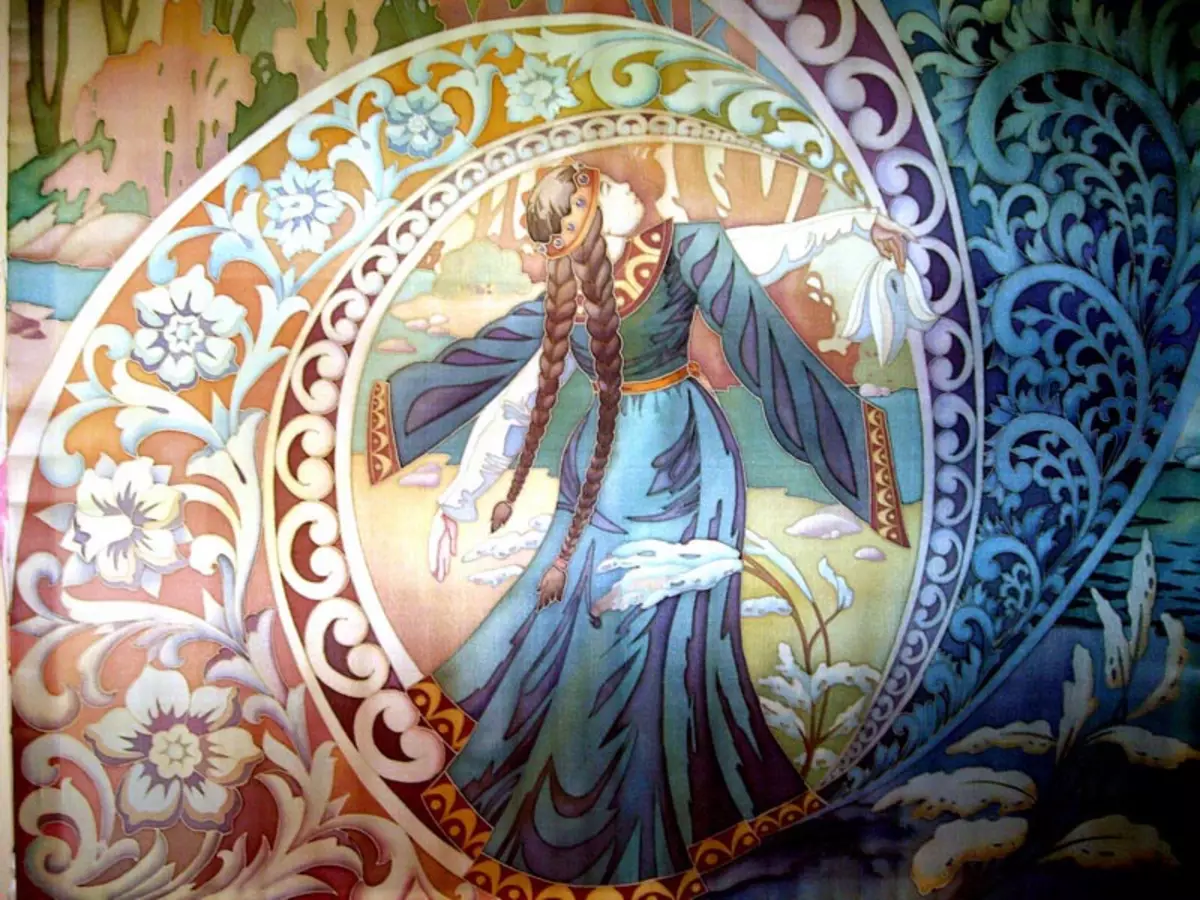
Some believe that this is a "Chinese painting", i.e. Homeland Batika is China. This opinion is most likely based on the fact that China has always been famous for its silk fabrics and the first learned to extract a silk thread. However, the "Chinese" is not quite a correct name, since the true homeland of the batik is Indonesia, where it moved to India. So it is rather "Indonesian" or "Asian" painting.
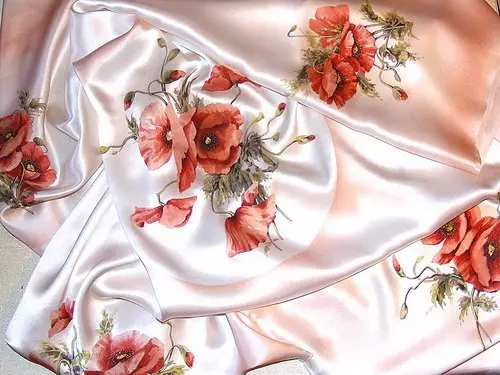
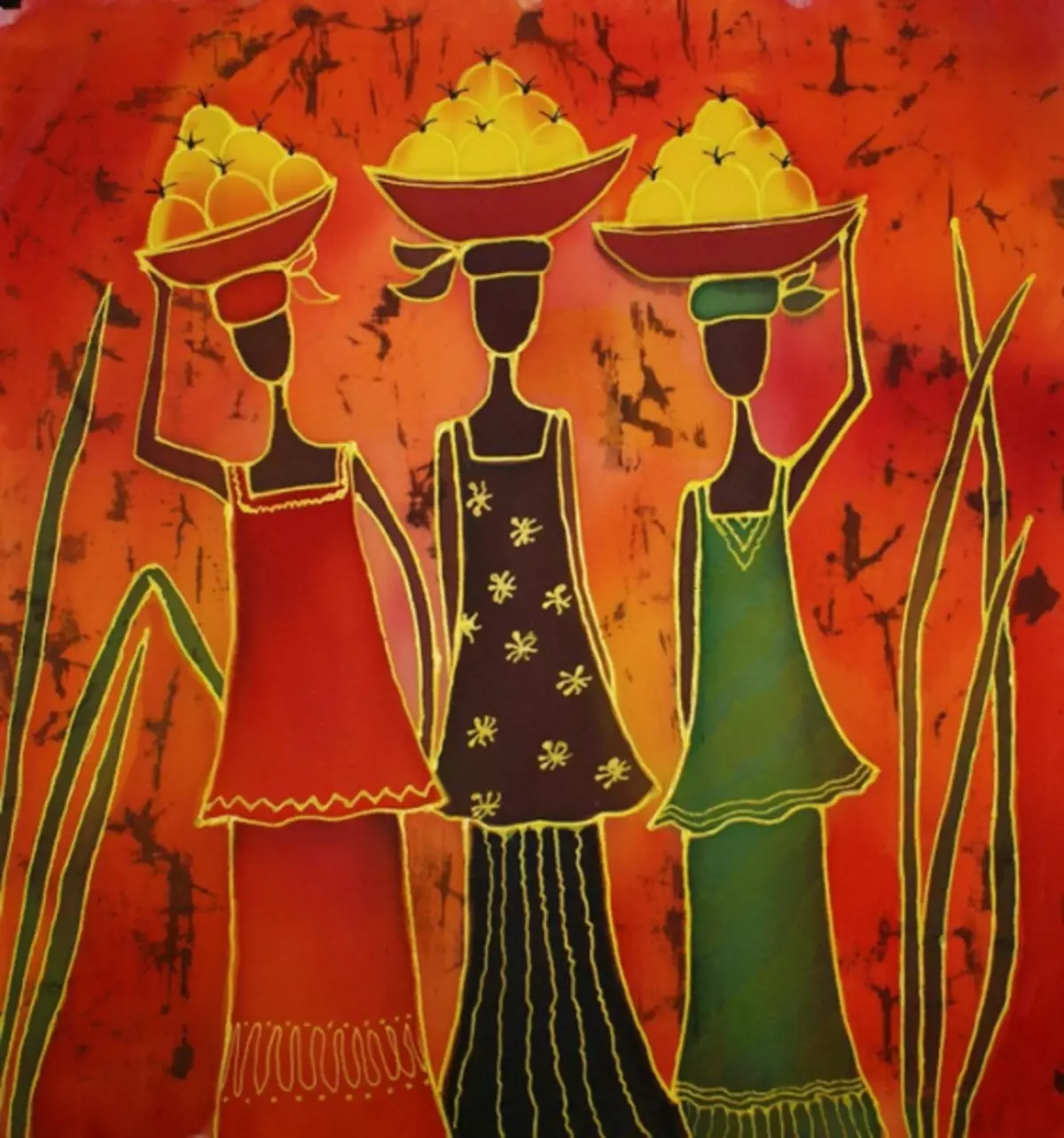
Basics of skill
You can paint not only silk, but also synthetics, wool, cotton. From the fabric, as well as the desired result depends on the painting technique.
Most often silk samples, but it is not fundamentally, especially if the Master has no sufficient experience in the batik. It is possible to practice the fabric in painting on a simple white cotton fabric.
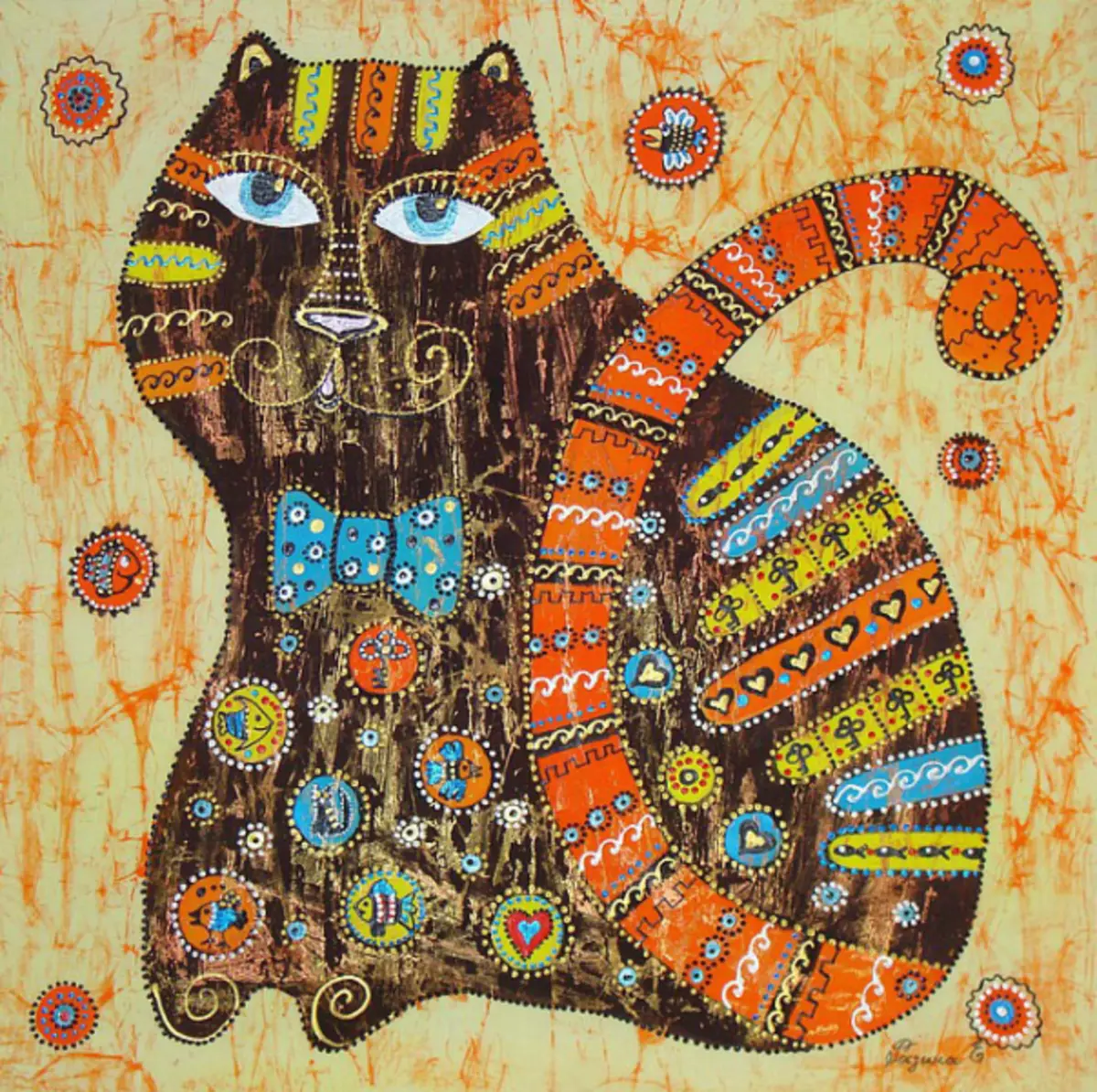
From ancient times, several ways to color fabric are known: cold, knotted, hot batik. Consider more the basic principle of the cool batik.
Cold way of painting, perhaps the most popular type of batik. Its development does not require special artistic skills, and in addition, this method will give a general idea of what the art of a batik.
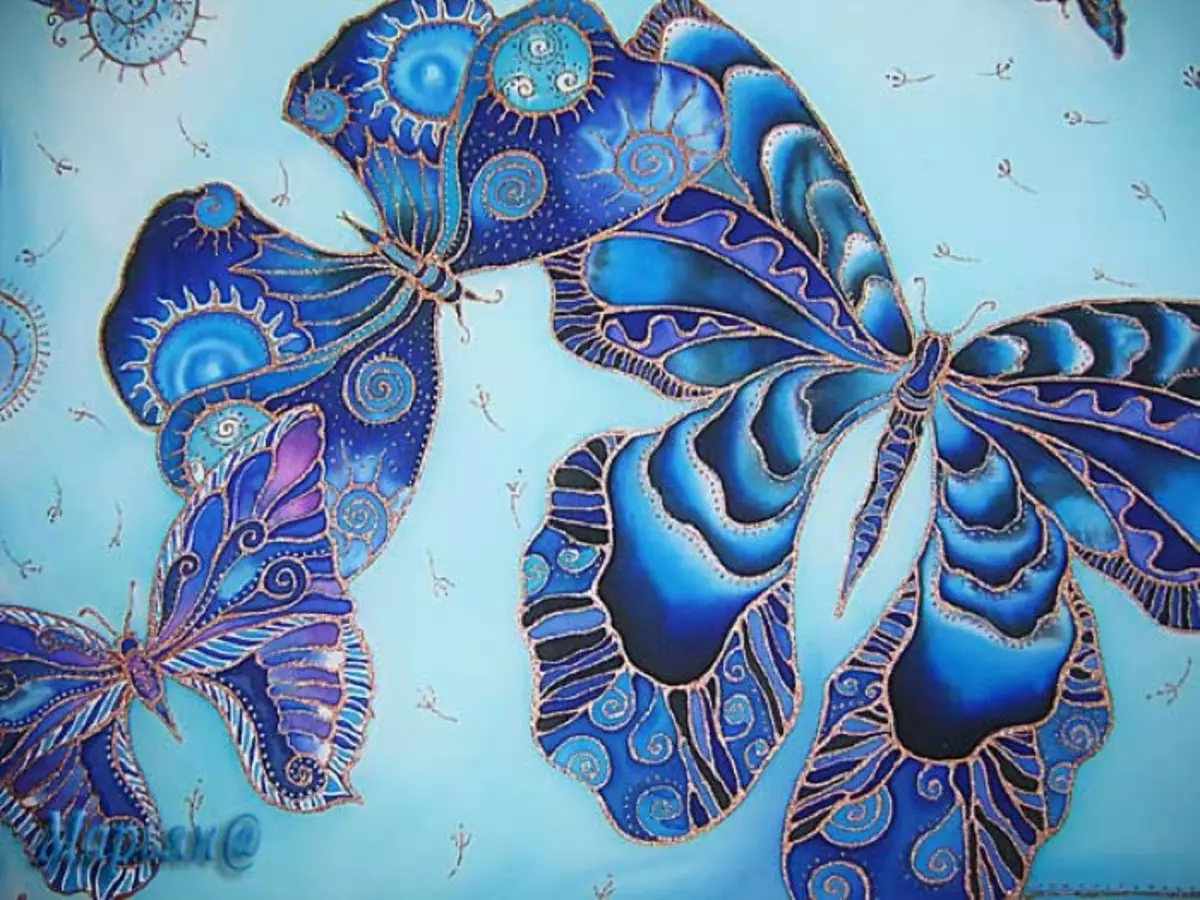
First of all, it is worth determining the materials, namely with paints and cloth. Batik's paints can be water-soluble and acrylic, under bearing and thermal plating.
Article on the topic: Crafts from beads with their own hands: Schemes for beginners with photos and video
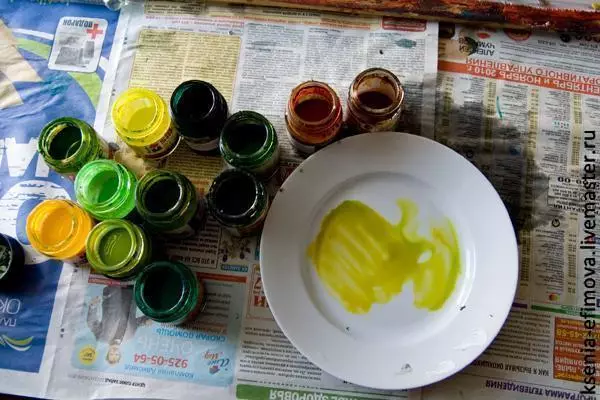
Water soluble are suitable for thin tissues of silk type and score tissue threads completely. Acrylic belong to the coating paints, since according to the consistency, they are similar to the gouache and are not able to penetrate "inside". As a rule, these types of paints are fixed differently: water-soluble is fixed by steam, and acrylic - thermal effects, that is, with an iron.
Dyes "Under Blasting" are considered more professional, and the consolidation process is more complicated than with acrylic paints. In this case, the fabric remains soft and smooth, it is impossible to separate the paint from the fabric. Using an iron, you can fix acrylic paints, for example, on cotton. At the same time, the paint does not penetrate the fibers of the fabric, and it remains more rigid painting in place.
If you professionally deal with a battle, then it is better to purchase natural silk and use water-soluble paints. For those who want only to try themselves in the painting of the fabric, natural cotton and acrylic is suitable.
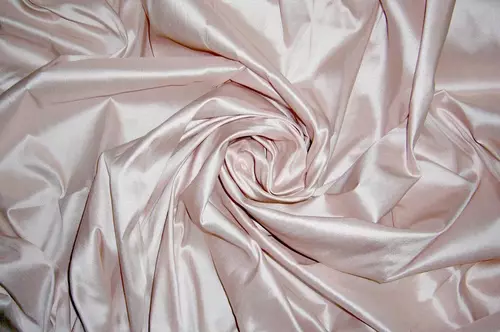
Required sets of paints under a certain type of fabric can be purchased in the store for creativity.
What else will need:
- Glass tank tube for drawing drawing lines (used for cold batik);
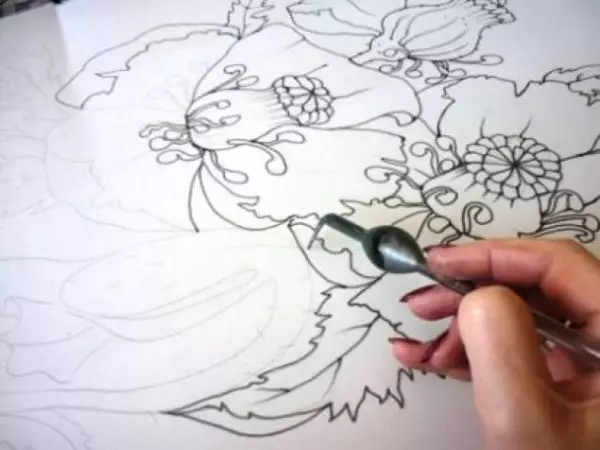
- Changing - a tool for applying wax with a hot way;
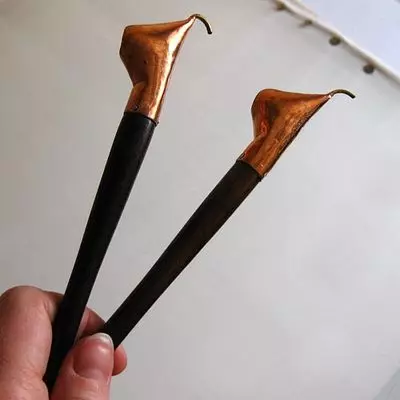
- subframe in order to pull the cloth, and the buttons for fixing;
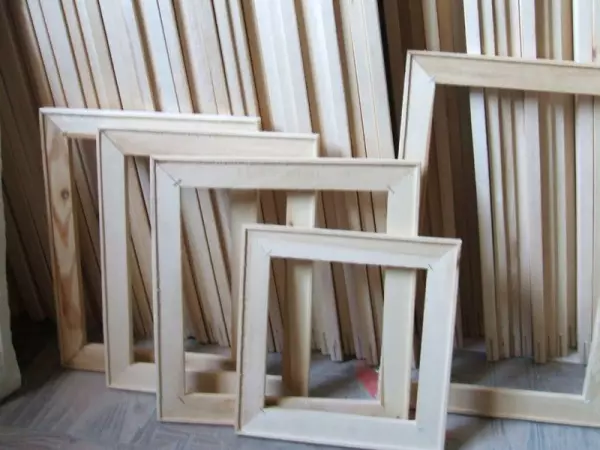
- brushes or airbrush;
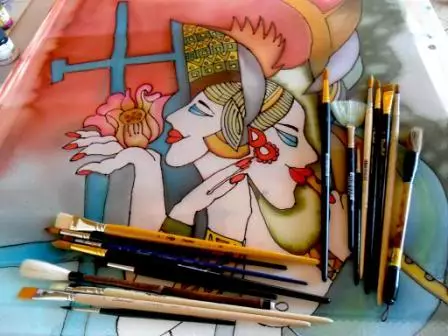
- Special multi-colored circuits for drawing;

- Contour drawings as a template.
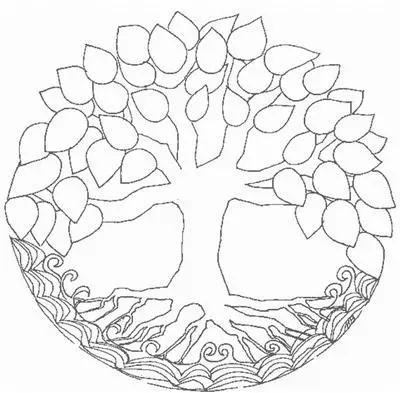
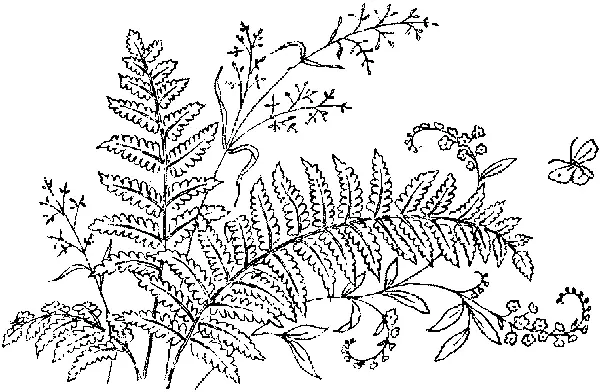
The general algorithm for creating painting on the fabric:
- Tighten the cloth to the subframe and secure the buttons. It is necessary to start with the corners and then fix on the sides. It is best to pull the wet fabric. It must be remembered that it should not be saved and should be stretched like a drum skin - very tight, without distortion and folds.
- Put a selected sketch under the fabric. With this method of painting, you can create whole pictures on the fabric, so it is necessary to come seriously to the choice of drawing. For beginners, it is recommended to choose an image with large parts and patterns.
Article on the topic: Knitting technique Brioche needles: Schemes with description and video
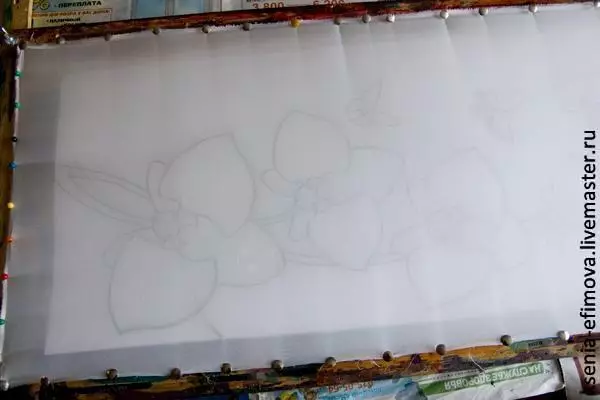
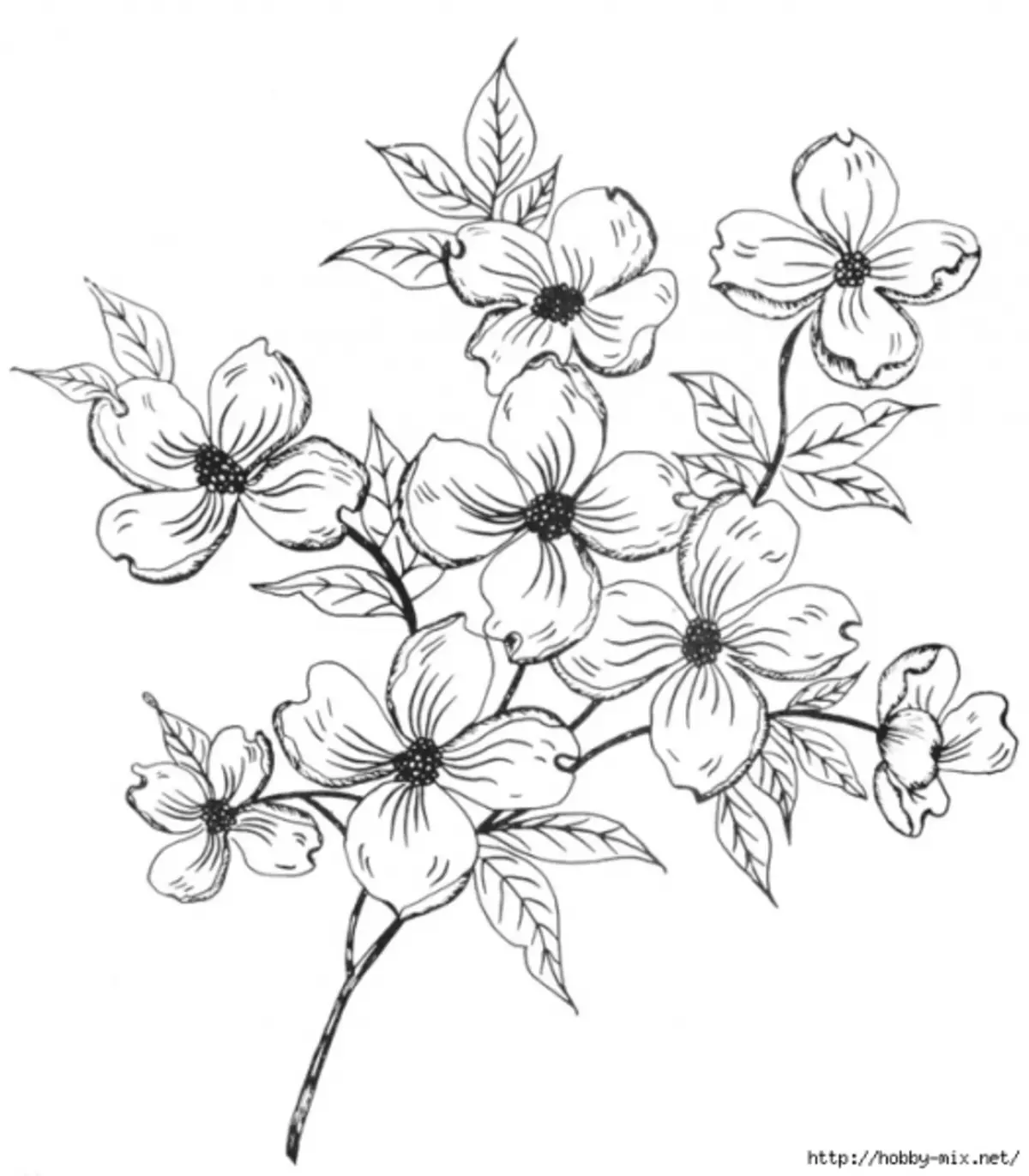
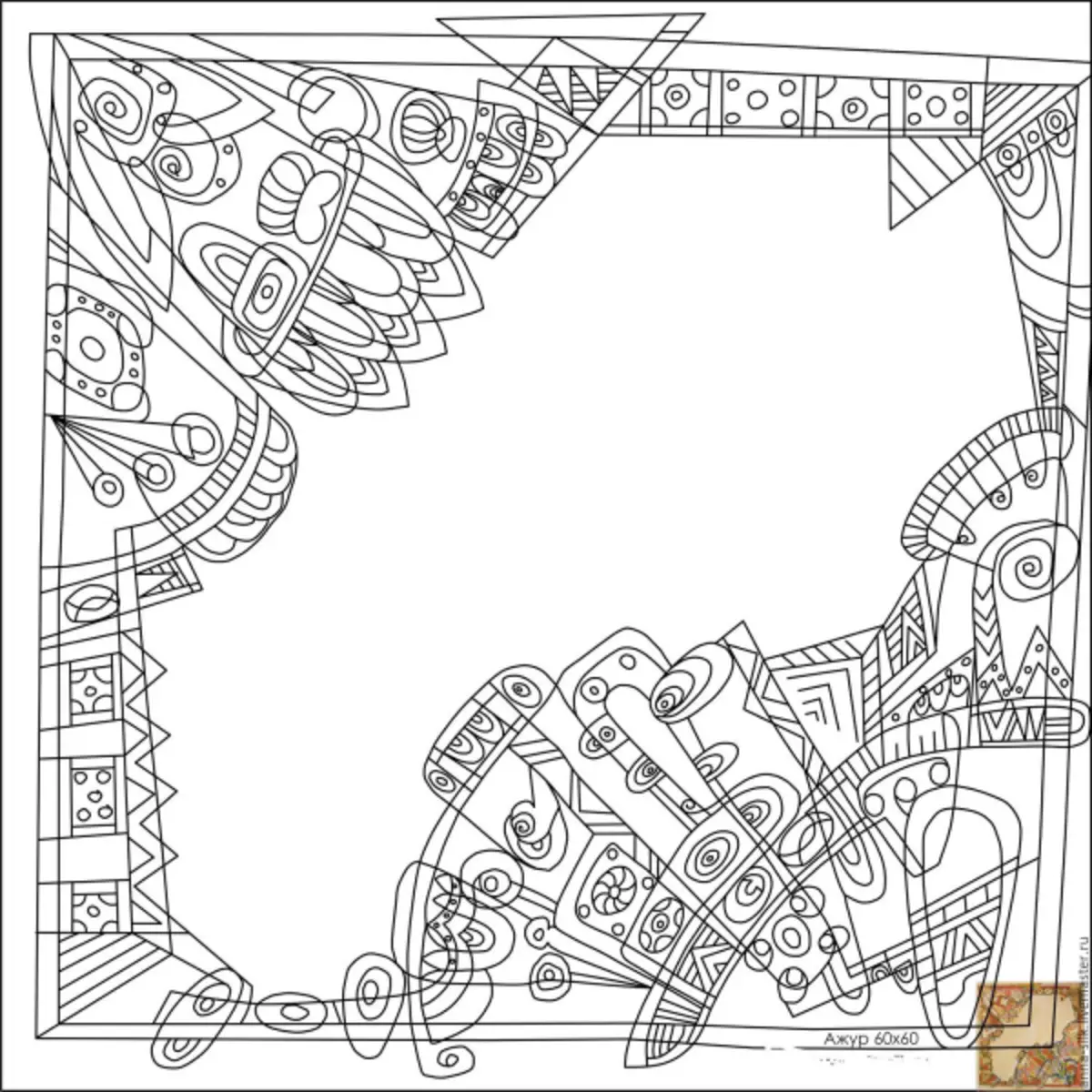
- Cut the picture translucent drawing through the contours reserve (using a tube). It is necessary to ensure that it is always perpendicular to the tissue and did not delay long in one place.
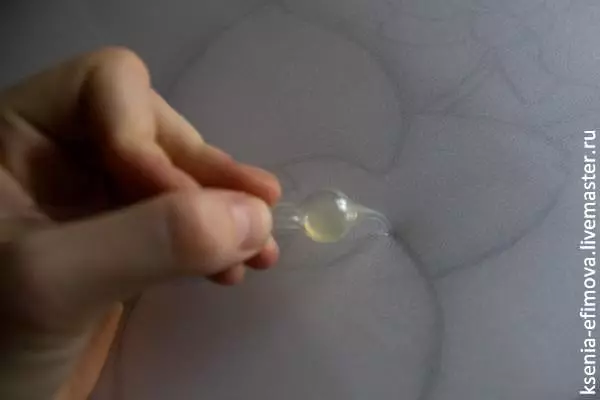
- View fabric with reserve to light to detect lines breaks and fix them. Leave to dry out (40-60 minutes).
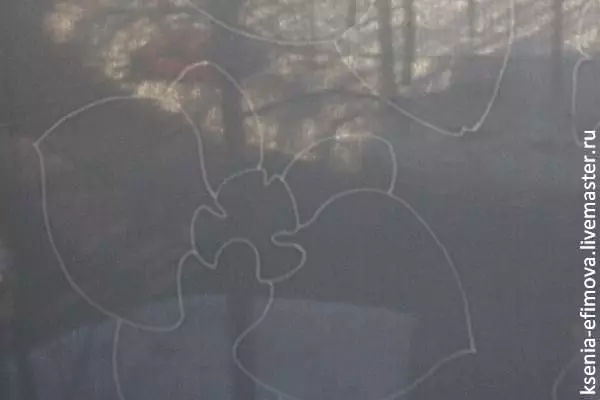
- Start painting background. To begin, it is necessary to moisten the desired sections of the tissue with water, and then apply a small layer of paint. You can make transitions from one color to another (from the dark to the light tone), to apply paint with stains.
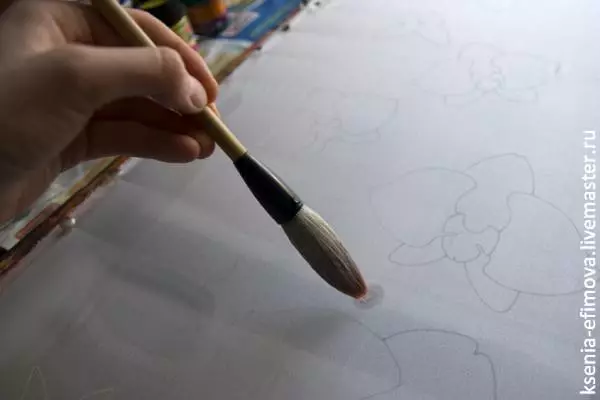
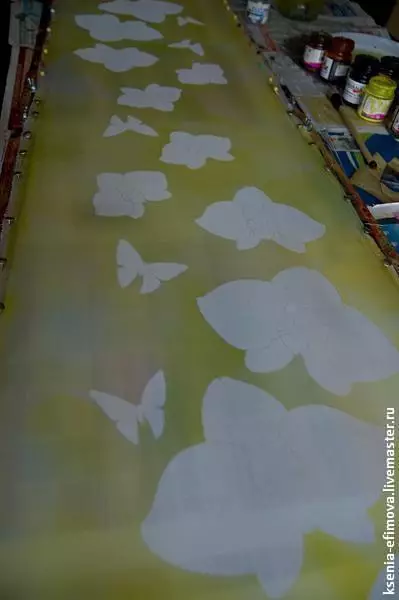
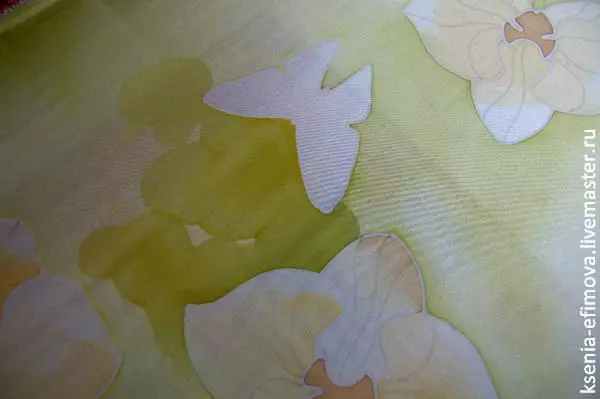
- Coloring all major parts, select individual elements, focusing with a brighter or dark color.
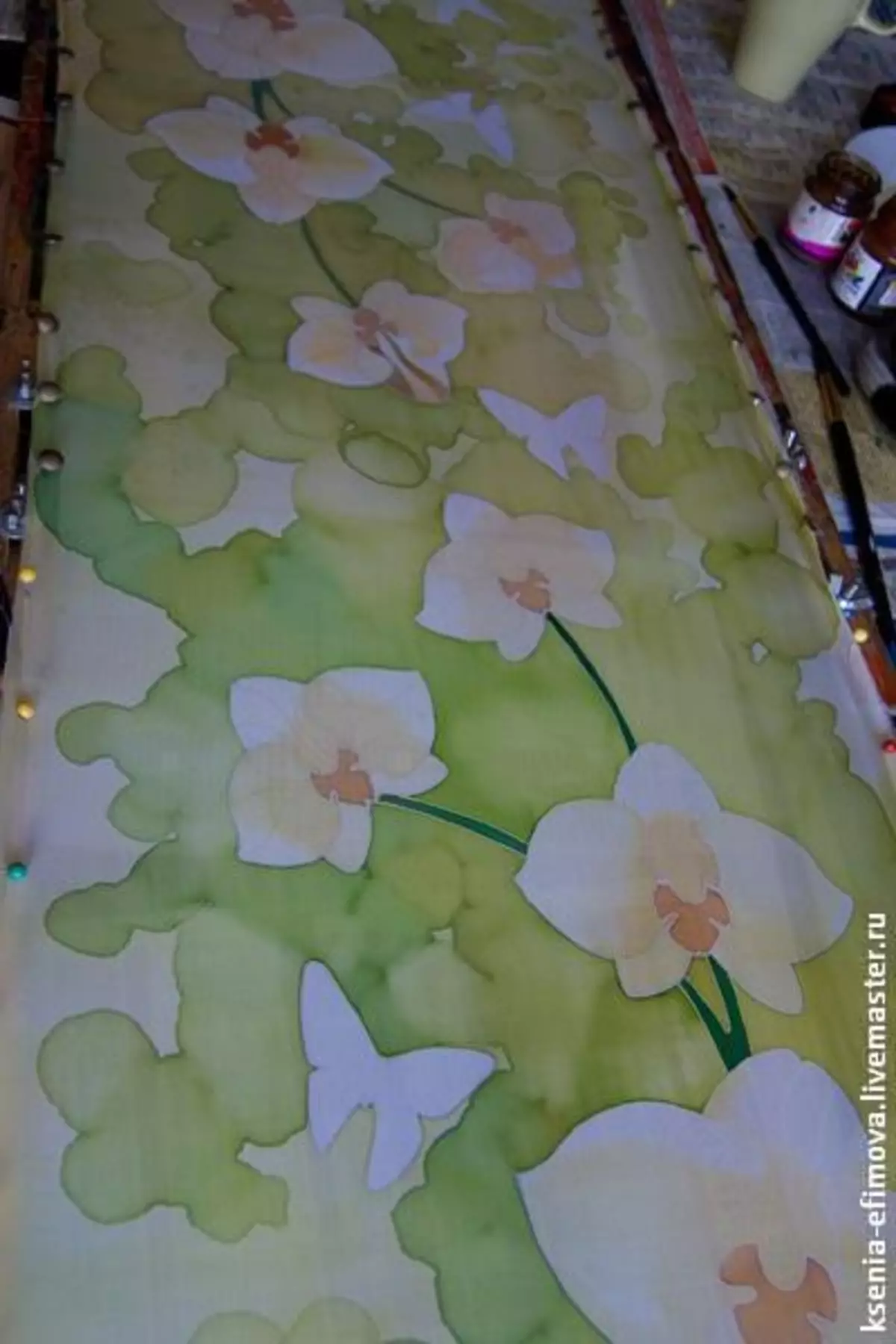
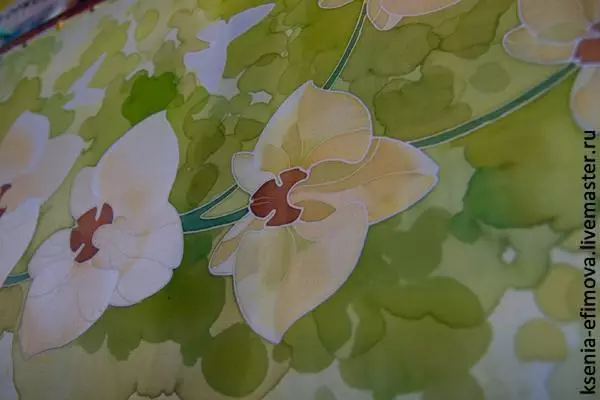
- Make detail with contour and thin brush.
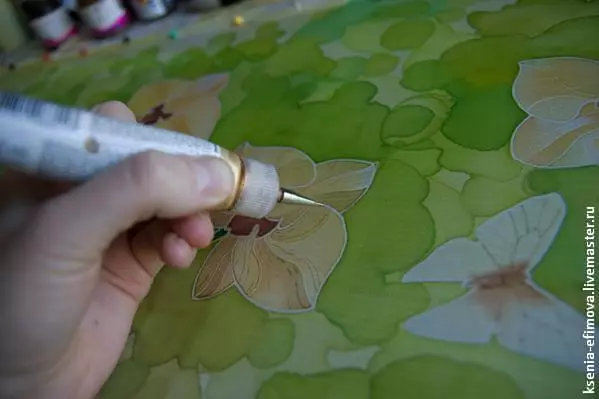
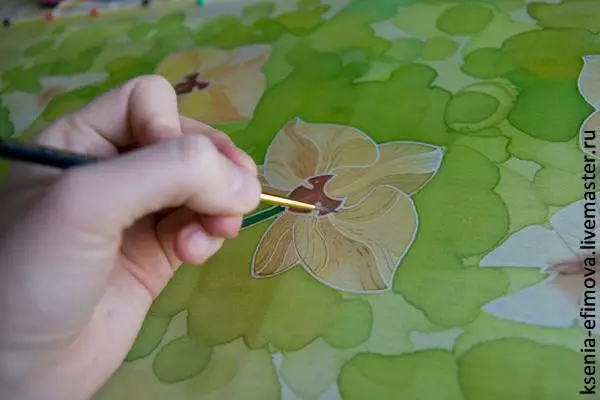
- Remove the fabric from the subframe and stroke the iron to better fix the paint. Leave the fabric about a day.
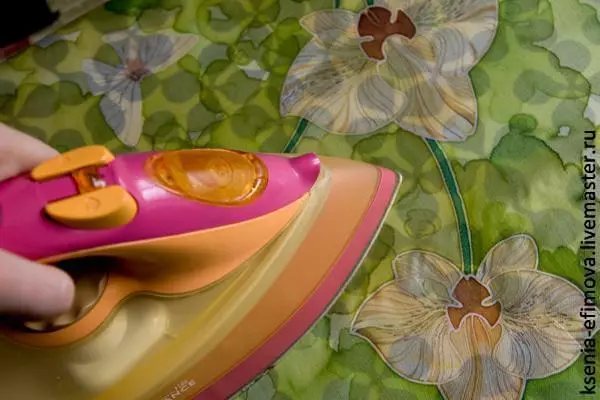
- Wrap in soapy water to remove the reserve residues, dry and stroke.
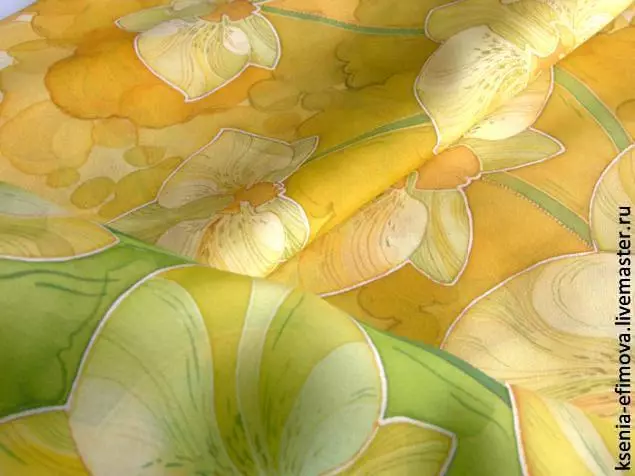
You do not need to use ready-made paintings templates. The fabric can decorate a free painting by hand. It all depends on the artist's experience, as well as his fantasy. Of course, before carrying a drawing on the fabric, it is best to make it sketch in size of the canvas. The painting can be decorated as wardrobe items, such as bags or silk scarves, and decorative interior items, such as screen or curtains.
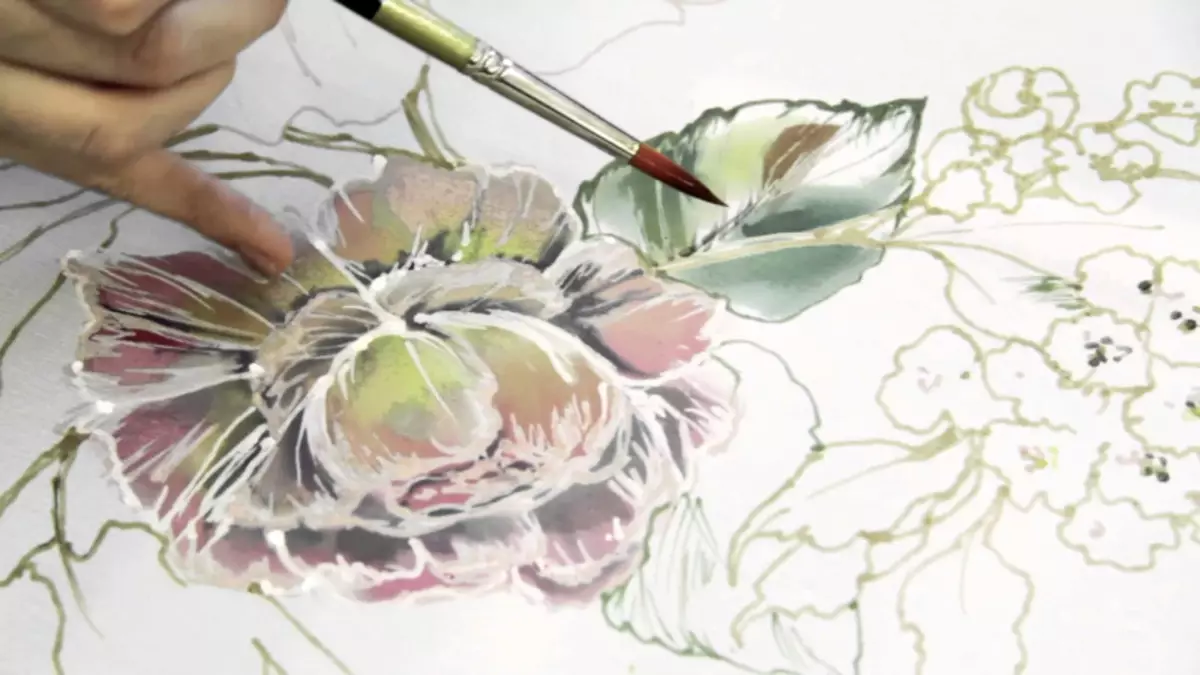
For beginners, hand painted can be quite complicated, requiring some drawing and confident possession skills, even if the painting is made according to the template. Those who do not want to mess around with tassels, paints, reserves and other things, may like a knoting method.
A nodule way of painting, or rather staining the fabric, is well suited to those who do not know how to draw. In this way, you can paint, T-shirts, Bundans, Bags. The essence of the technique is reduced to the fact that the fabric must be twisted in a certain way and tie with threads into the nodules. After that, the knot is painted and the fabric, already becoming multicolored, unfolds.
Article on the topic: DIY for the new year of the Christmas tree with their own hands - ideas
Artistic painting will be able to transform any cloth, give the second life to old things and inspire to create new ones.
Video on the topic
More about silk painting can be found in the selection of video.
